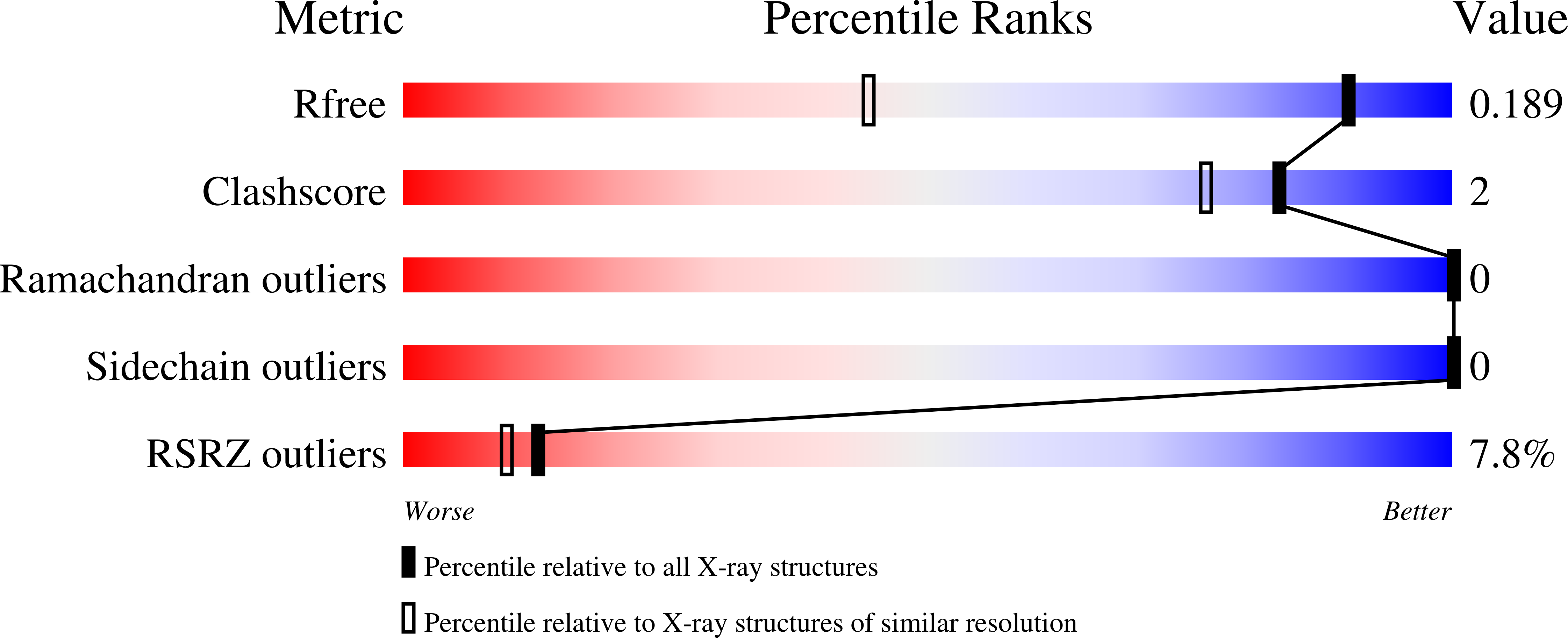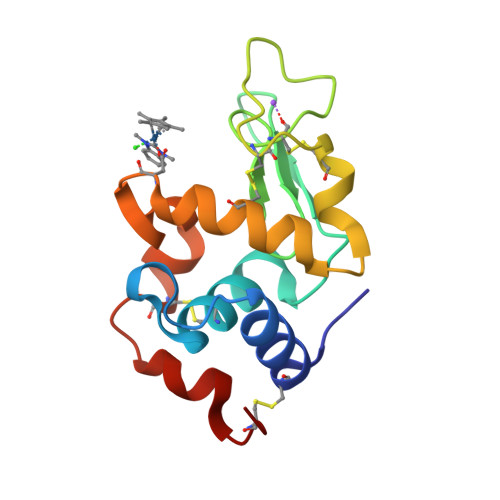Probing the Paradigm of Promiscuity for N-Heterocyclic Carbene Complexes and their Protein Adduct Formation.
Sullivan, M.P., Cziferszky, M., Tolbatov, I., Truong, D., Mercadante, D., Re, N., Gust, R., Goldstone, D.C., Hartinger, C.(2021) Angew Chem Int Ed Engl
- PubMed: 34196088
- DOI: https://doi.org/10.1002/anie.202106906
- Primary Citation of Related Structures:
6PL9, 6PLA, 6PLB - PubMed Abstract:
Metal complexes can be considered a "paradigm of promiscuity" when it comes to their interactions with proteins. They often form adducts with a variety of donor atoms in an unselective manner. We have characterized the adducts formed between a series of isostructural N-heterocyclic carbene (NHC) complexes with Ru, Os, Rh, and Ir centers and the model protein hen egg white lysozyme by X-ray crystallography and mass spectrometry. Distinctive behavior for the metal compounds was observed with the more labile Ru and Rh complexes targeting mainly a surface l-histidine moiety through cleavage of p-cymene or NHC co-ligands, respectively. In contrast, the more inert Os and Ir derivatives were detected abundantly in an electronegative binding pocket after undergoing ligand exchange of a chlorido ligand for an amino acid side chain. Computational studies supported the binding profiles and hinted at the role of the protein microenvironment for metal complexes eliciting selectivity for specific binding sites on the protein.
Organizational Affiliation:
School of Chemical Sciences, University of Auckland, Private Bag 92019, Auckland, 1142, New Zealand.


















